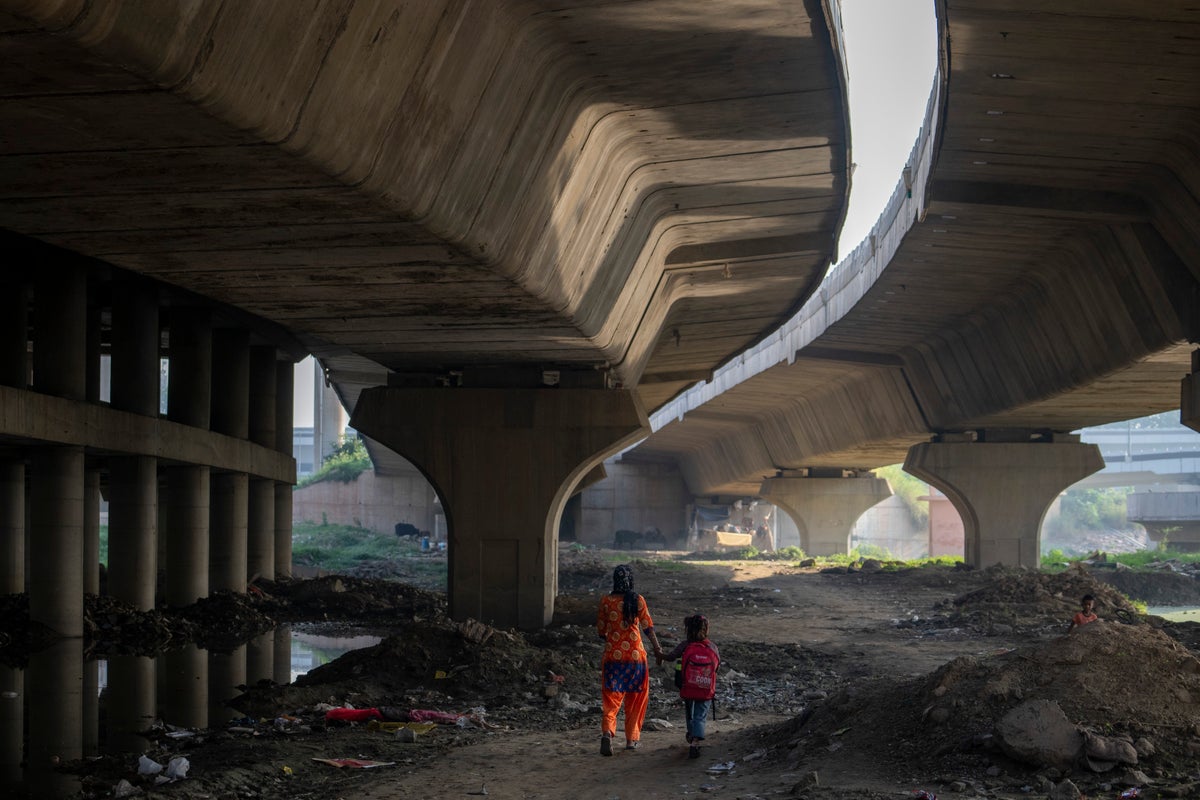
Storms, floods and wildfires caused over 43 million displacements of children between 2016 and 2021 and threaten to displace 100 million more children over the next 30 years, Unicef has said.
Weather-related disasters, which are becoming more violent and frequent as greenhouse gases cause the Earth’s atmosphere to heat up, uprooted up to 20,000 children a day in 44 countries over the six-year period, with 95% of those from floods, the UN agency said.
Unicef said it had measured the number of child displacements rather than the number of children, as the same person could be displaced more than once. The true number was also likely to be higher as many cases went undocumented.
China and the Philippines were among the countries most affected because of large child populations that were exposed to extreme weather and because early-warning and evacuation measures had improved recently, meaning better reporting.
Relative to the child population size, those on small island states such as Dominica and Vanuatu were the most affected by storms, while children in Somalia and South Sudan were most affected by floods.
Flooding accounted for 40.9 million (95%) of child displacements during the period analysed, in part because of effective reporting and evacuation, while droughts caused 1.3 million internal displacements and wildfires triggered 810,000, with more than a third of those in 2020 alone.
Canada, Israel and the US recorded the most wildfire displacements, while Somalia recorded the most from drought.
For those who are forced to flee, the fear and impact can be especially devastating, with worry of whether they will return home, resume school, or be forced to move again— Catherine Russell, Unicef
Unicef’s executive director Catherine Russell said: “It is terrifying for any child when a ferocious wildfire, storm or flood barrels into their community.
“For those who are forced to flee, the fear and impact can be especially devastating, with worry of whether they will return home, resume school, or be forced to move again.”
In a report called Children Displaced In A Changing Climate, Unicef said that decisions to move may be abrupt, in the face of immediate danger, or the result of an evacuation where lives are saved but at the cost of having to face other dangers.
Many children at risk of climate displacement were in countries that were already struggling with conflict and poverty and local authorities were often unable to offer enough resources in support.
We have the tools and knowledge to respond to this escalating challenge for children, but we are acting far too slowly— Catherine Russell, Unicef
Using a risk model developed by the Internal Displacement Monitoring Centre, Unicef said that flooding from rivers had the potential to displace 96 million children over the next 30 years.
Based on other climate data, they said cyclones and storm surges could displace 10.3 million and 7.2 million children respectively over the same period, although the real number would be likely to be much higher as climate change brought more extreme weather more frequently.
“Moving may have saved their lives, but it’s also very disruptive. As the impacts of climate change escalate, so too will climate-driven movement,” Ms Russell said.
Katherine Nightingale, WaterAid’s global director of international affairs, said: “We have the tools and knowledge to respond to this escalating challenge for children, but we are acting far too slowly.
“We need to strengthen efforts to prepare communities, protect children at risk of displacement, and support those already uprooted.
“The climate crisis is a water crisis, with a staggering 90% of all natural disasters water-related and while all of us are feeling the effects, it’s the world’s most vulnerable who suffer the most.
“From flood defences to drought resistance, the solutions exist. But more investment is needed urgently to develop robust and reliable water, sanitation and hygiene systems which serve as a lifeline for communities who must defend themselves against climate uncertainty on a daily basis.”







